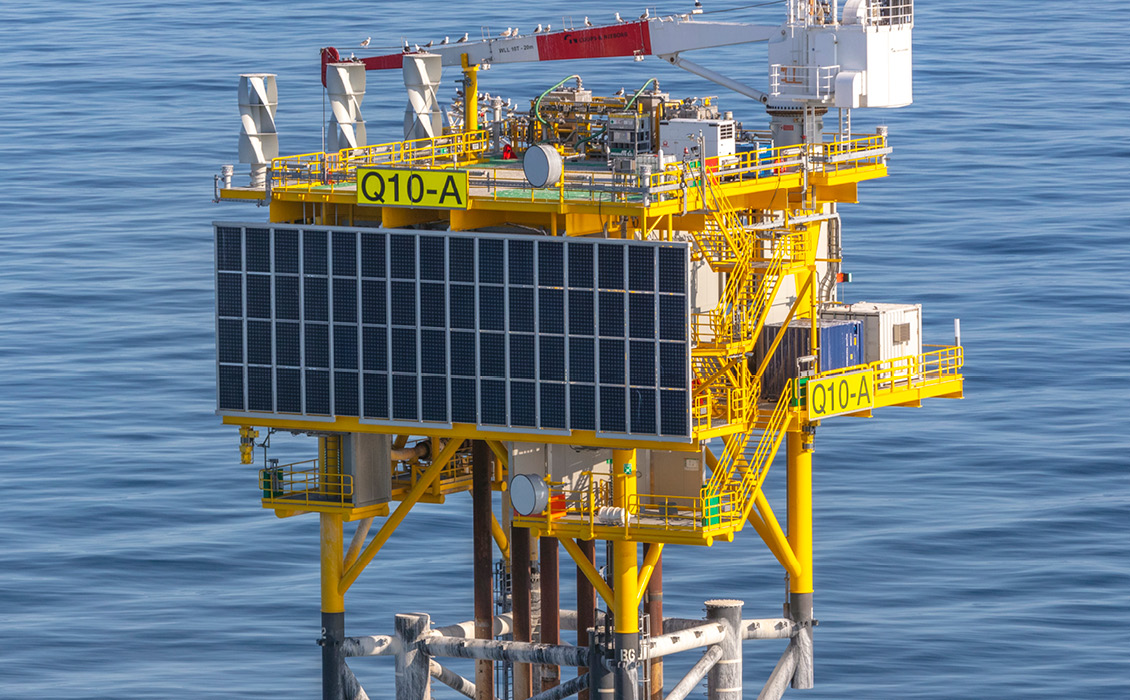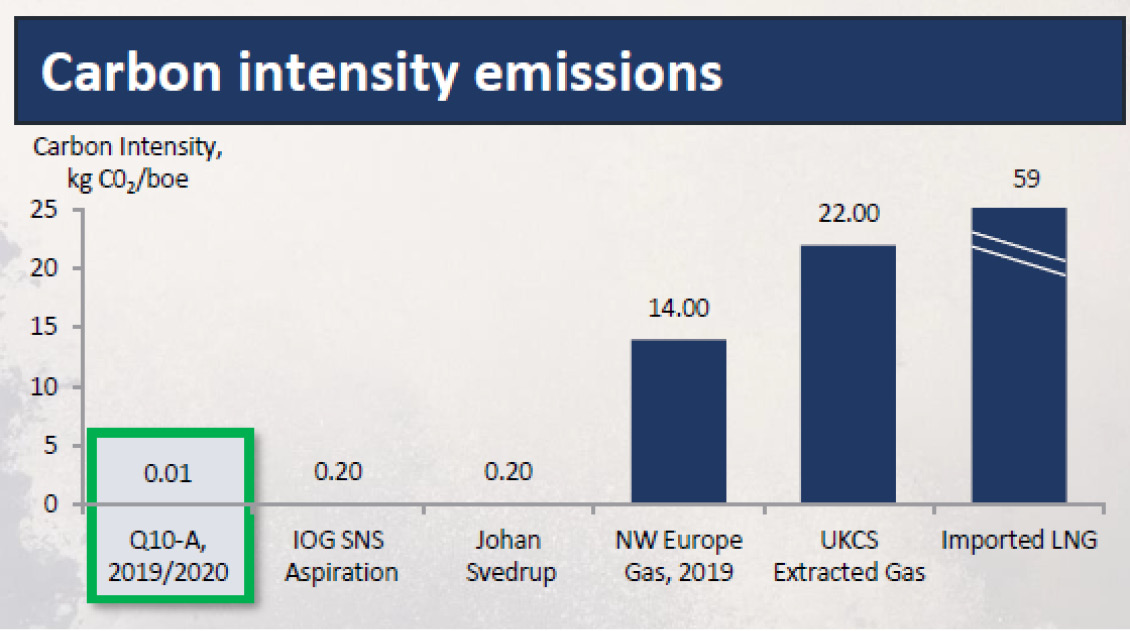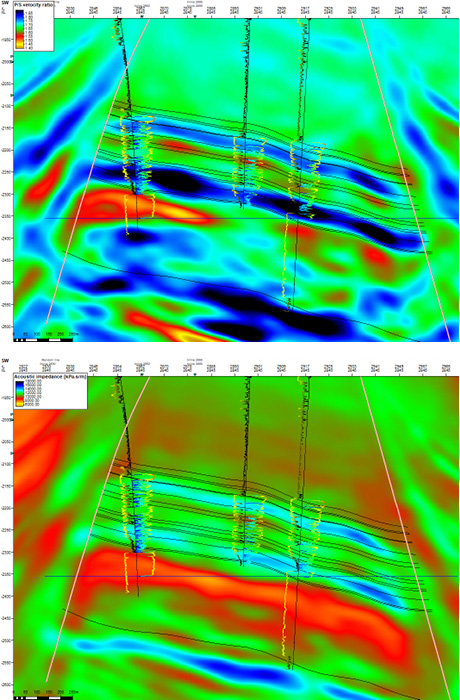The Q10-A development, 20 km off the Dutch coast, demonstrates how it is possible to secure and develop essential, European gas resources from a mature area with minimal carbon footprint. Powered by an onboard solar farm and wind turbines, it demonstrates how critical gas resources help to fulfil a primary objective of supporting the energy transition in Western Europe.
Kistos PLC was established in 2020 to create value for its investors through the acquisition and management of companies or businesses in the energy sector. Its first acquisition was that of Tulip Oil Netherlands in 2021, where Kistos became the operator of several exploration and production licences in the Dutch offshore sector, including the producing Q10-A gas field and several near-field appraisal and exploration objectives located off the coast of Amsterdam (Figure 1).
This acquisition fits well with the company strategy and objectives: to acquire assets with a role in the energy transition. A desire to produce cleaner, affordable energy, coupled with the new geopolitical landscape following the events in Ukraine, has exposed Western Europe’s dependency on imports of Russian gas as well as the need to transition away from coal and other forms of energy generation.
Revisiting Subsurface Potential
Accelerating domestic gas production is high on the political agendas in Western Europe as countries try to maintain a reliable and affordable energy supply. The urgency of local gas development is driven not only by ongoing demand and short supply; the window of opportunity for offshore gas production is also closing because much of the ageing infrastructure in the North Sea is nearing its end of life.
Southern North Sea gas fields can be produced very efficiently through small, normally unmanned platforms powered by solar and wind, making use of existing export infrastructure. The Q10-A development located 20 km offshore the coast of the Netherlands was designed to do just that and has been in operation since 2019 (Figure 2), achieving Scope 1 emissions during 2020 of 0.01 kg CO2/boe. To illustrate how low these emissions are for the Q10-A development, see Figure 3.
Furthermore, facilities at several existing third-party offshore platforms are exploring plans to be electrified with the use of power generated by nearby wind farms, through integration with the power infrastructure to-and-from shore. This would ultimately reduce lifecycle emissions and could potentially extend the economic limits of certain offshore facilities. Kistos plans to develop nearby appraisal and exploration targets with a similar strategy and development concept, with continued focus on minimising the carbon footprint.
Reappraisal of Geology
It is not just opportunities for low-emissions developments that are the attraction of the Dutch Q-blocks. The subsurface is also very interesting. Figure 1 shows the area to be an empty corridor with a striking lack of hydrocarbon developments, despite the presence of well-known hydrocarbon plays described below.
During the 1960s–1980s several ‘dry’ wells were drilled, and operators abandoned the area for what was perceived to be more productive acreage elsewhere. However, the team at Kistos and its predecessors have extensively reviewed the old well archives and discovered several wells that did encounter hydrocarbons despite being classified as ‘dry’. The team believed that one of the reasons for this appeared to be that some of these wells were drilled in suboptimal positions, off-structure.
The central Q-blocks are situated at the southern edge of the Broad Fourteens Basin. The Carboniferous including the Westphalian source rock is present everywhere and overlain by the Permian Rotliegend as commonly seen in this area. In the central Q-blocks, the southern fringe of the Broad Fourteens Basin hosts a unique Zechstein sequence consisting mainly of clastic sediments, topped by the Platten Z3 Dolomite (Figure 4).
Due to the absence of salt in the Zechstein, the Rotliegend has no top seal of its own and therefore the combined Rotliegend-Zechstein Clastic and Carbonate reservoirs rely on the Main Bunter Shale as a top seal. This results in a single connected gas column in the Rotliegend and Zechstein reservoirs (Figure 5).
In addition, the lower Triassic Volpriehausen is a known producing reservoir in the region. Reservoirs and top seal can be mapped reliably, but fault seal and juxtaposition of waste zones across the bounding faults form a key exploration risk. The complex tectonic history of the area has led to multiple phases of burial, uplift and fault reactivation, resulting in diagenesis and variable reservoir preservation.
Figure 6 shows an example of 2D seismic data from 1960, which was shot in the Q-blocks as a marine survey show with dynamite.
This highlights some of the imaging challenges that were faced when many of the exploration wells were drilled in the area. The archive well files of Q10-02 (1962) and Q07-01 (1973) contained information about logging and well-testing operations that led the team to the conclusion that the Q10-A structure must be gas-bearing after all. To de-risk the opportunity that thus far had only been mapped on sparse 2D seismic lines, a 3D seismic survey was shot and processed by 2011. This led to a much better definition of the structure: a slightly tilted Permo-Triassic fault block, flanked by Jurassic grabens and overlain by a gentle Cretaceous anticline.
The newly acquired 2010 3D seismic not only allowed for a much more detailed mapping and improved structural definition of the Q10-A horst block; it also revealed a ‘flat spot’ and amplitude anomaly in the main target reservoir: the Permian Rotliegend Slochteren Formation.
Wedge modelling confirmed that a seismic response could be visible in the Slochteren Formation; the contact should stand out as a hard kick while the top of the reservoir should dim above the contact (Figure 7).
Further Quantitative Seismic analysis included the generation of a Vp/Vs cube. Analysis revealed a very strong response to gas in the Slochteren Formation while acoustic impedance models added surprisingly little value (Figure 10).
These three direct hydrocarbon indicators in the Q10-A targets de-risked the opportunity sufficiently to take the decision to drill an appraisal well in 2015. The well Q10-A-01 confirmed and tested gas in all target reservoirs. The depth of the observed flat spot in the Rotliegend, the structure-conform amplitude anomaly at the top of the Rotliegend, and the bottom of the Vp/Vs anomaly all coincided with the depth of the logged gas-water contact in the Q10-A-01 well.
Fast Track Development
A final investment decision (FID) for full field development of the Q10-A field was taken in January 2018. Within six months the 42 km export pipeline to P15-D was in place, and the newly constructed unmanned platform was installed six months later. Five additional production wells were drilled, targeting the various stacked reservoirs and first gas was achieved in February 2019; just over a year after taking FID. The ability of the team to deliver this project with a uniquely fast turnaround time, safely and within budget was a great success, and will allow Kistos to leverage the retained experience and expertise to develop similar fields through near-field appraisal and exploration.
Following the success of Q10-A, a large reprocessing project was undertaken; six legacy seismic datasets covering the Q07-Q08-Q10-Q11 blocks were merged and reprocessed into a high-quality PreSDM product. This dataset allows for detailed mapping and de-risking of prospects, allowing for a better dry-hole analysis and an improved understanding of the structural complexity prevailing in the area. The new mapping effort resulted in a sizeable portfolio of undeveloped discoveries, prospects and leads within the acreage of the Q-blocks.
The nearby Q11-B field is a tilted fault block resembling the Q10-A field which was discovered in 1969; producing gas to surface from the Lower Volpriehausen Formation from well Q11-01-S2. Q11-01-S2 was also planned on 2D seismic dating from 1960, and the operator at the time struggled to maintain the planned trajectory causing the well to land far down dip on the Q11-B structure. Furthermore, petrophysical analysis of the 1969 log data indicated that in addition to the Volpriehausen Formation, the Zechstein Clastics and Carbonates were also gas-bearing.
Appraisal well Q11-B-01 was spudded by Kistos in November 2021 and targeted the stacked reservoirs in the Q11-B field in a more favourable up-dip position than the 1969 discovery well. Q11-B-01 confirmed gas in Triassic and Permian reservoirs, both of which were stimulated and tested, and produced gas to surface in early 2022. Kistos is currently working on a field development plan for Q11-B.
Further Upside
Appraisal and exploration efforts in the Q-blocks are continuing and the learnings from the recent Q11-B-01 well will be considered for de-risking and ranking the portfolio going forward, with the potential for appraisal and exploration drilling in 2022–2023. One high-ranking prospect is the Q10-Gamma structure: an undrilled tilted fault block with the same proven Permian and Triassic reservoirs and located within reach of the Q10-A platform (Figure 7). A successful exploration well has the potential to be brought onto production immediately at the Q10-A platform. Similarly, several undrilled fault blocks are located close to the Q11-B location, providing the opportunity for future exploration successes to be tied into the Q10–Q11 cluster quickly, and at low cost.
Through the strategy described, Kistos intends to strengthen its position as a leading independent producer of clean, domestically sourced gas through future exploration and appraisal activity in the North Sea, in order to fulfil its primary objective of supporting the energy transition in Western Europe.














